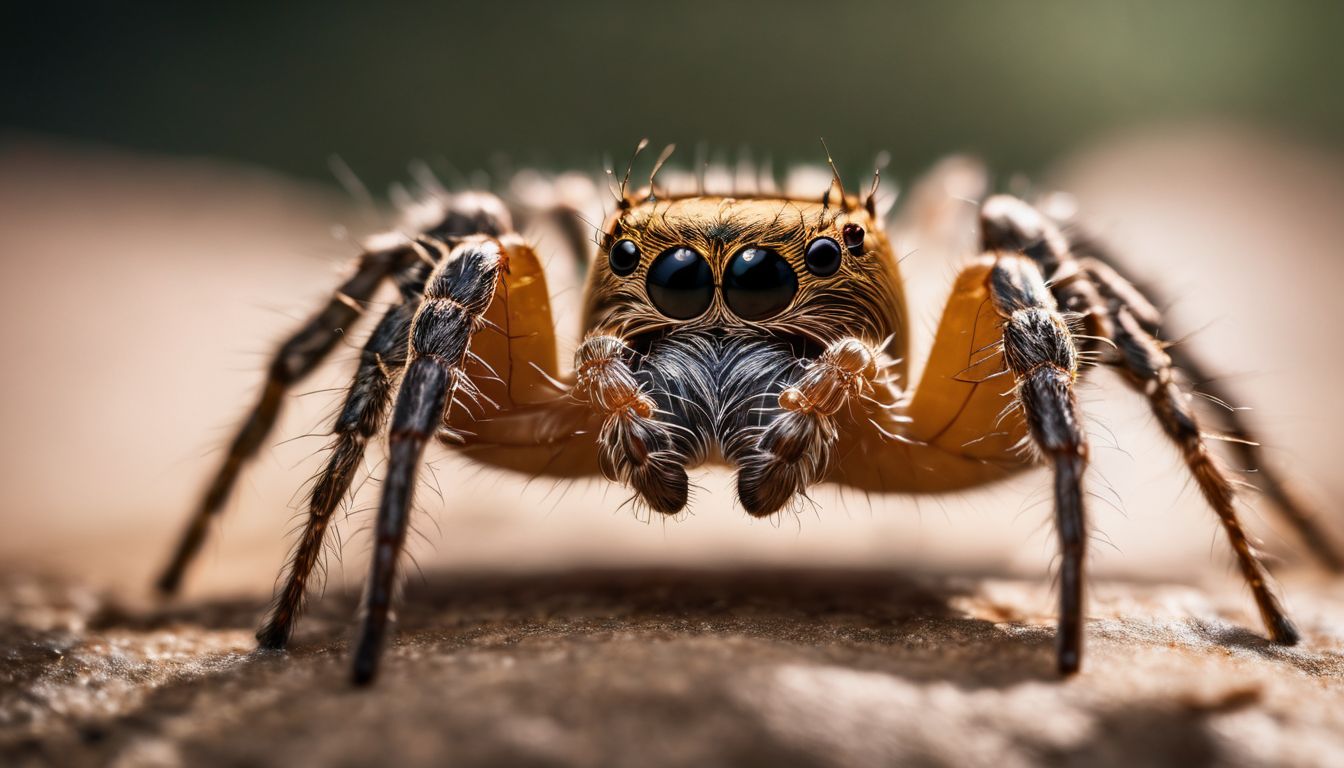Do you want to know do spiders have tongues? Are you curious about the fascinating feeding mechanisms of spiders? Wondering how they sense and explore their environment without a traditional tongue. In this blog post, we will uncover the truth behind the spider’s mouth structure and unravel its unique feeding mechanisms.
Keep reading to find out whether or not spiders have tongues!
Key Takeaways
- Spiders do not have tongues but instead have two appendages called pedipalps which serve the same purpose as a tongue does for other creatures – tasting.
- Spiders use silk to sense their environment and detect options and threats around them while using venom to paralyze or kill prey in order for easy consumption.
- Web-building spiders build intricate webs of sticky threads on spokes to trap unsuspecting insects while hunting spiders rely on excellent eyesight and fast reflexes to capture their target meal.
- Spider’s body has adaptations like sensitive hairs that allow them to explore objects without tasting anything giving insight into changing conditions around them thus saving energy when detecting food items
Spider’s Mouth Structure and Eating Mechanism
Spiders have a unique mouths equipped with powerful chelicerae and fang-like jaws to take down prey and resources.
Chelicerae and Fang-like Jaws
Spiders have two sets of fang-like jaws in their mouths which are specialized for gripping and injecting venom, the chelicerae. The hollow, pointed edges of these special jaw appendages give a spider the precision to capture its prey with little effort.
The chelicerae also contain glands that secrete venom with each bite. This venom helps spiders subdue their prey quickly so they can feed more efficiently and safely. Additionally, the sharp edge of chelicerae makes it easy for spiders to close around small insects or other potential meals and puncture them before proceeding to feed on them.
Pedipalps and Labium
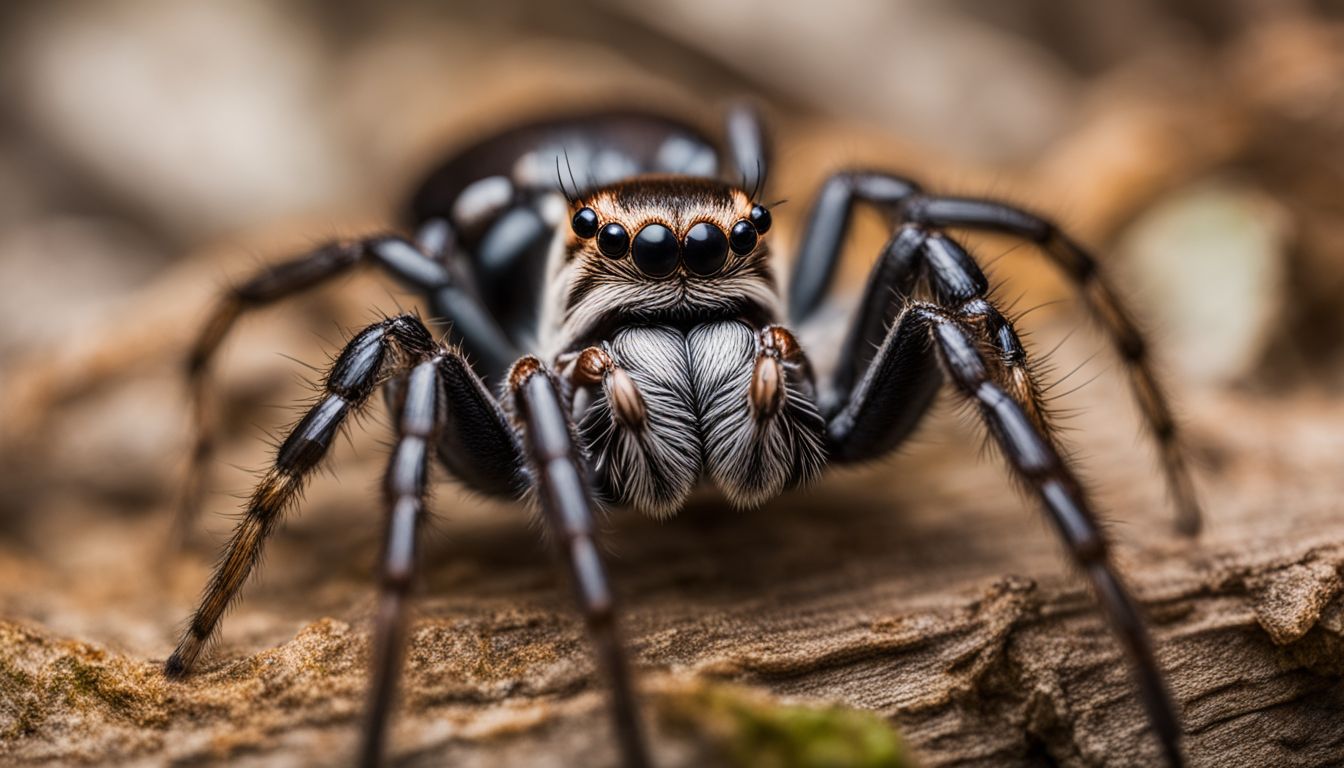
Spiders have two main appendages near their mouth called pedipalps. These structures are long, slim legs with small grasping “fingers” on the end, and they help the spider manipulate prey and transport it to its mouth.
Spiders can also swing these pedipalps around in a circle like an animal’s whiskers. Inside of the spider’s head sits another structure known as the labium which helps support food while it is being moved into the jaws of a spider for consumption.
This feature works along with taste receptors located all over a spider’s body so that spiders know what types of prey is safe to consume without accidentally poisoning themselves or consuming something too large for them to eat.
How Spiders Taste Food
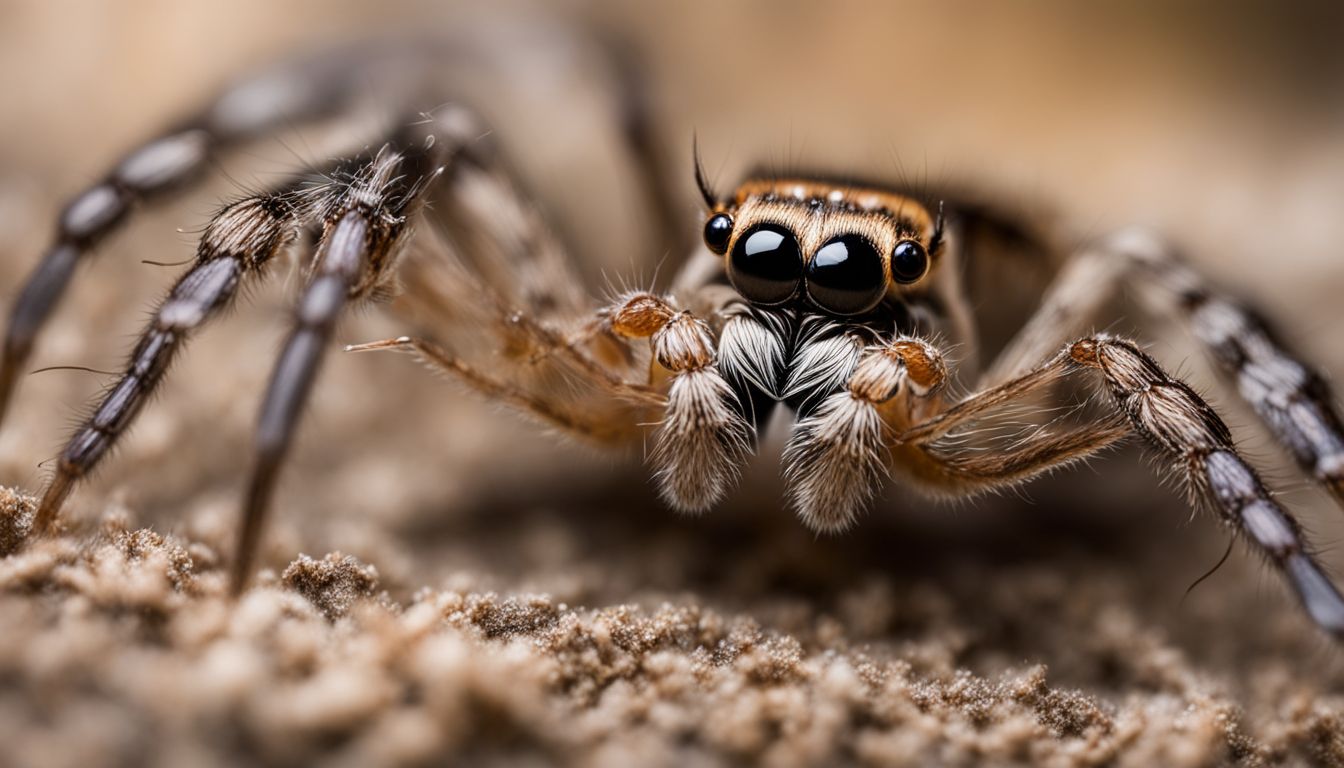
Spiders use their sense of touch and taste to explore their food and decide if it is safe for consumption. The chelicerae, the two fang-like structures in a spider’s mouth, are connected to sensitive nerves that allow them to determine composition and texture.
Beneath the chelicerae lies an appendage called the labium which gives spiders their characteristic lip shape. Additionally, they have pedipalps which don’t just give them a freaky appearance but also serve as sensory organs allowing them to ‘taste’ and smell prey while not actually ingesting any part of it.
Spiders can raise these hairy appendages up in order to feel around or sample potential meals before deciding whether they want to risk eating something suspicious Looking farther back into a spider’s body there are tactile hairs on its legs which further allows it to investigate any objects by feeling without necessarily tasting anything.
How Spiders Drink Water
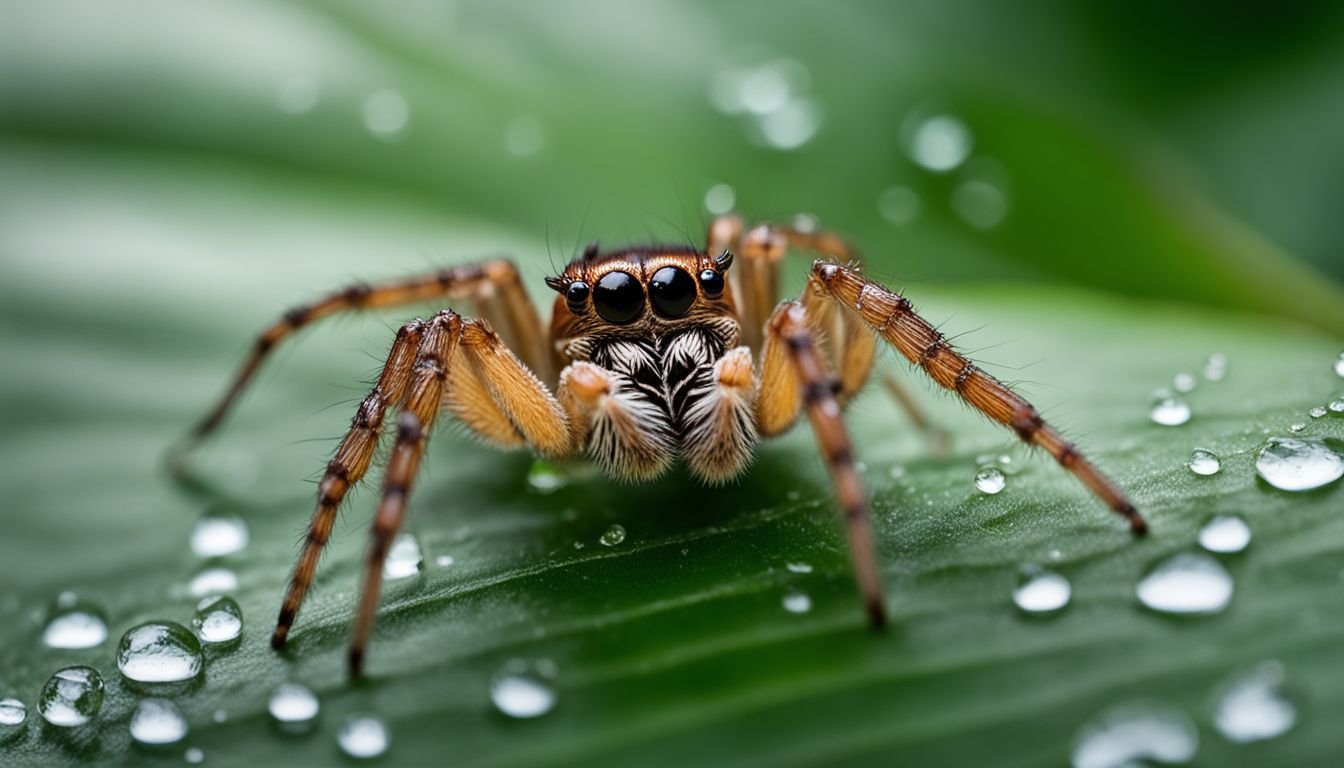
Spiders don’t look like they have the best sipping straw, but their mouthparts more than make up for it. Spiders use a unique feeding mechanism to drink water – instead of tongues and lips, spiders use two plate-like structures called chelicerae located at the front of their mouth.
These chelicerae create a sucking motion that allows spiders to suck liquid into their bodies from plants or other surfaces. They can also consume prey in its liquid state by forcing the liquid into their mouth and swallowing it without chewing.
In order to absorb as much of this fluid as possible, spider secretions help break down proteins allowing them easier access while guarding against potential harm from bacteria or poisons present in their food sources.
Do Spiders Have Tongues?
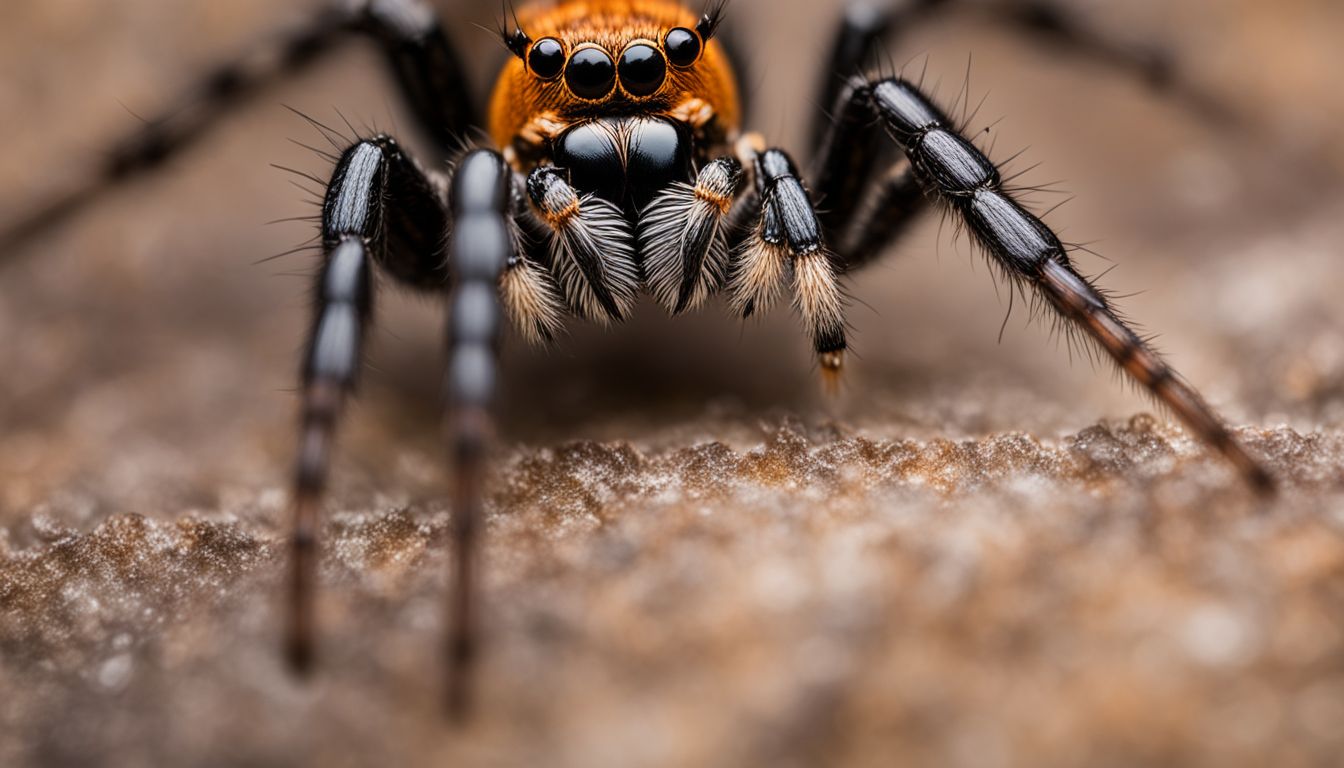
Unlike humans and many other animals, spiders do not have tongues. Instead of having a tongue, they have two appendages called pedipalps that serve the same purpose as a tongue does in other creatures – tasting.
Pedipalps are chelicerae organs located near the front of their mouth with sensory organs at the tip to detect food items like prey or nectar. The spider then uses its labium (not considered a traditional tongue) to sweep its prey towards its fang-shaped jaws called chelicerae for ingestion.
Unlike a typical tongue, chelicerae serve multiple functions such as injecting venom into victims and tearing apart prey tissue to allow easier digestion. Additionally, spiders can smell with their bodies coated in sensitive hairs as well as detect chemical changes around them just from feeling these vibrations on the ground in what we call active senses which makes it almost impossible for them to need an organ like a human’s lively tongues.
Unraveling the Fascinating Feeding Mechanisms of Spiders
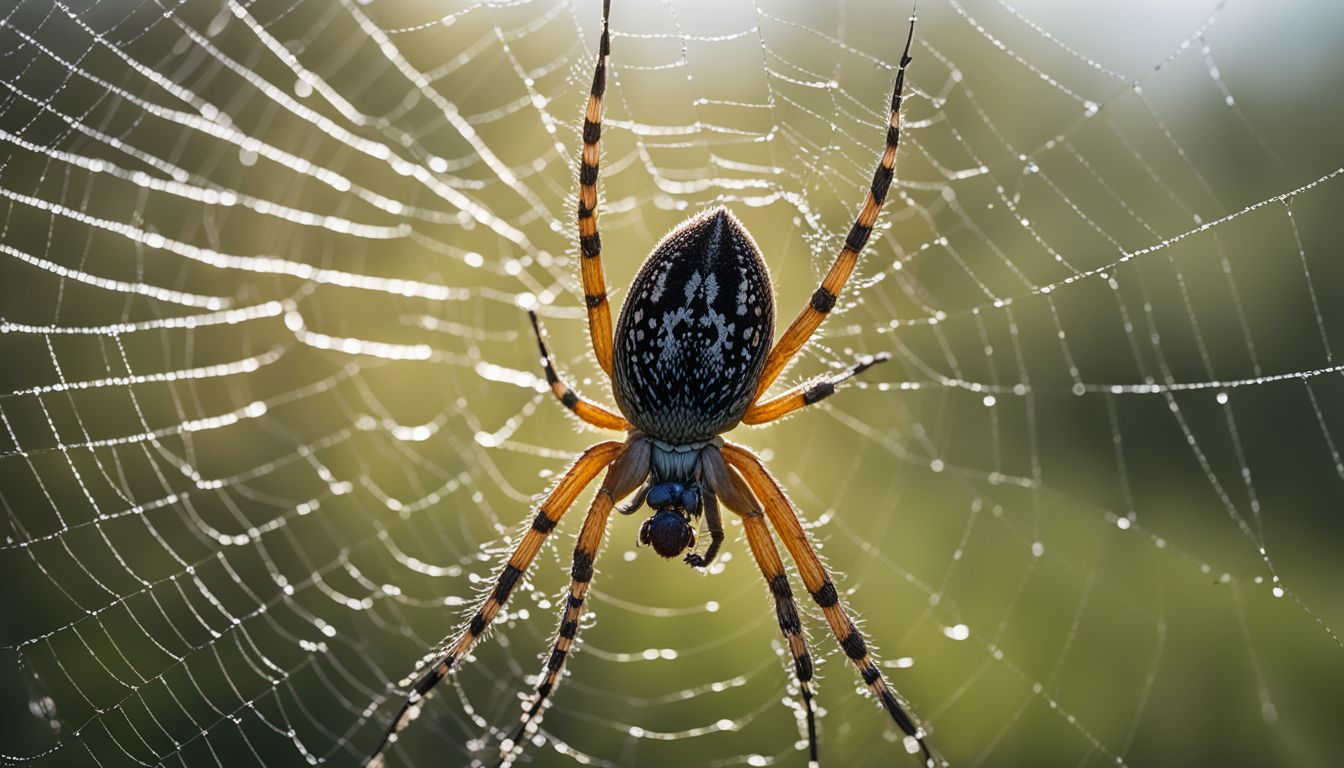
Through a closer examination of their eating habits, extraordinary adaptions and hunting methods can be revealed that break away from the conventional perspectives on spiders.
Silk and Sensory Perception

Spiders are renowned for their ability to use silk in myriad ways, from creating webs to wrapping prey. This silk serves another purpose, however. It helps the spider sense its environment and detect what is happening around it.
The thin strands of protein-rich silk form a network that spiders can use to collect information about the world they inhabit and act on it accordingly.
Silk also provides very important sensory information to these arachnids which would otherwise be inaccessible. Many species rely on vibrations or changes in air pressure detected by vibrating bristles along their legs as well as tiny organs called slit sensilla near their mouths or at the tip of each leg.
These various complexes allow them to identify potential prey, predators, and other interesting objects nearby without so much as moving further than the perimeter of the web there constructed.
Venom and Predation
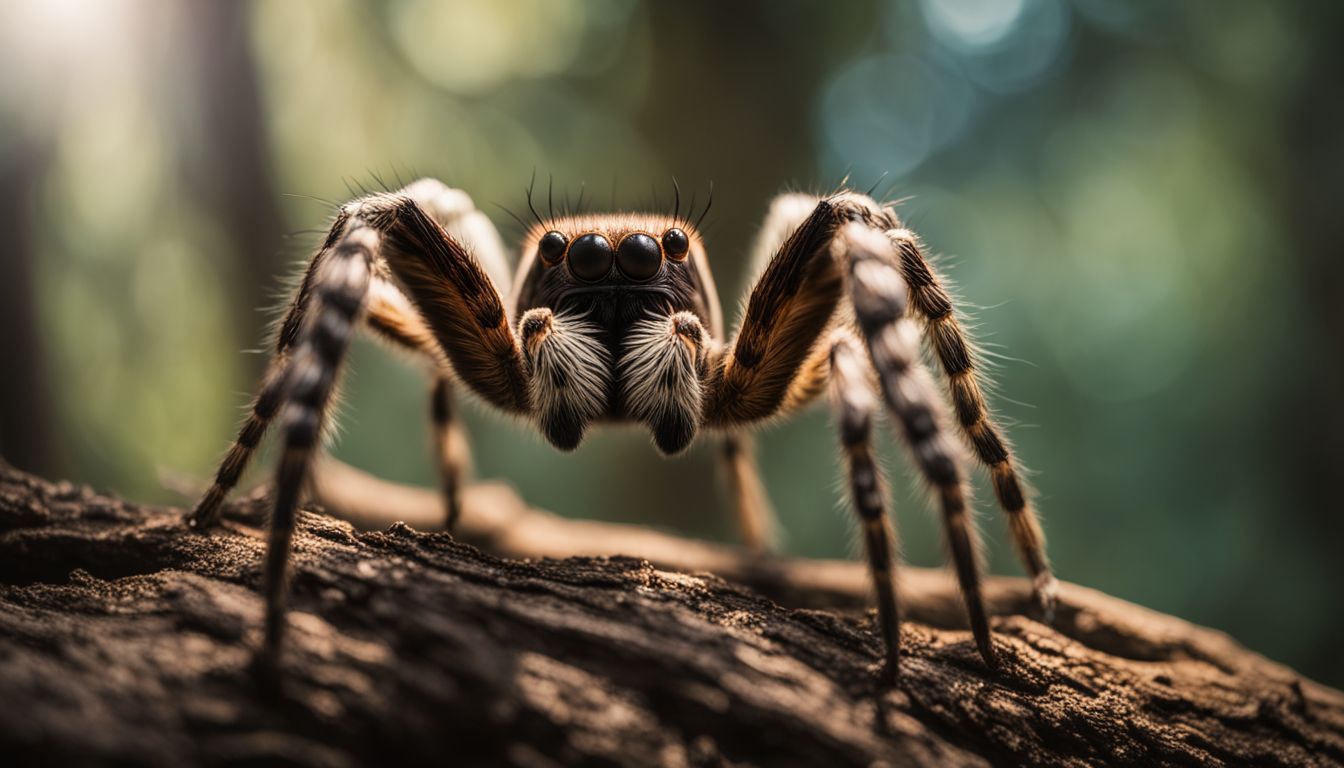
When hunting for prey, most spiders rely on venom as their primary weapon. Venom is a complex combination of proteins that can immobilize or even kill animals, making it easier for the spider to catch and consume its meal.
Different spiders use different types of venoms which vary according to species and size of potential prey. Many spiders have special glands that produce this venom, surrounding their fangs with hollow channels so they can inject it into victims within milliseconds.
The effects of a spider’s venom depend on the specific components within its signature blend—it can cause paralysis, interfere with nerve functions, stop blood flow, disrupt muscles; even liquefy flesh in some cases! The North American tarantula hawks make use of these concoctions quite effectively; they paralyze and then drag large tarantulas back to their nests where larvae feed on them days later! To protect themselves from predators desperate for an easy meal (including other insects!), certain insect species actually develop helmets around vulnerable areas like mandibles and antennae as a defense against toxic bites by arachnids or related predators.
Web-Building Spiders and Feeding
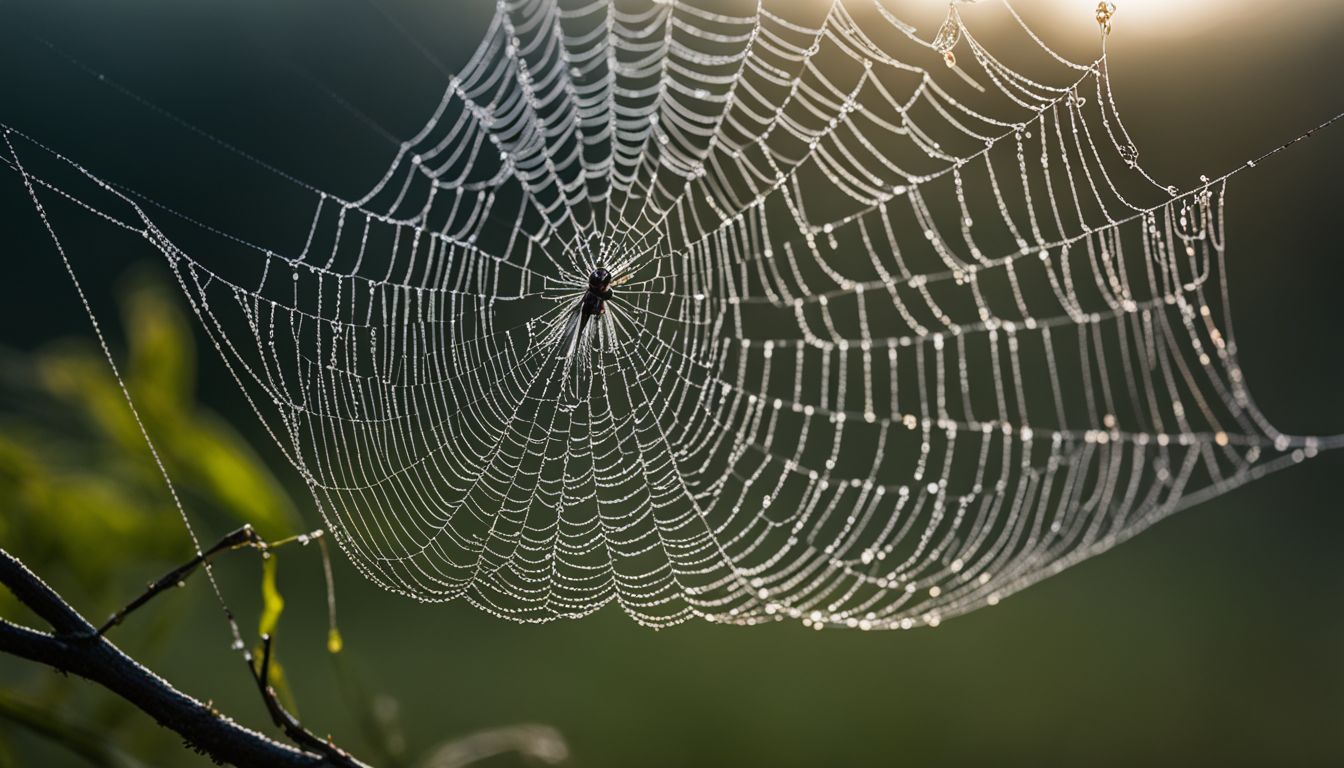
Web-building spiders use their silk to build intricate webs for trapping prey. To begin constructing a web, the spider spins an initial line of silk and after that anchors it somewhere such as leaves, branches or tree trunks. Then comes the designing part where they anchor more lines radiating from this sagittal plane of strings in various directions forming triangulated symmetrical patterns like orbs and funnels. The silken building is guarded with sticky threads on spokes which helps them catch unsuspecting insects.
Hunting Spiders and Feeding
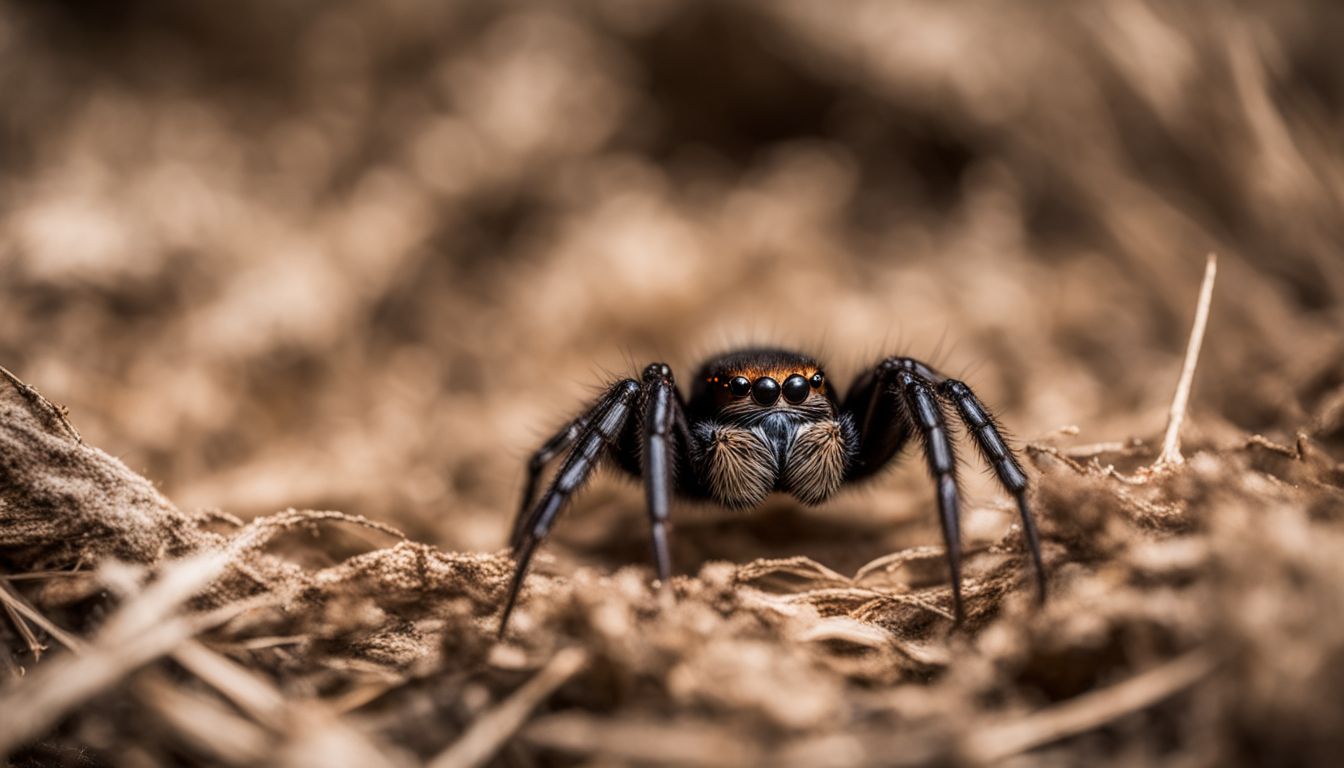
Many spiders rely on hunting in order to obtain their meals. These spiders typically have excellent eyesight and fast reflexes, allowing them to spot any unsuspected prey before it has a chance of escaping. Hunting spiders can take various forms; some may build webs or stalk the environment while others ambush their victims. Whatever they choose, these predators must be prepared for quick and decisive action when capturing their meal.
Filter-Feeding Spiders
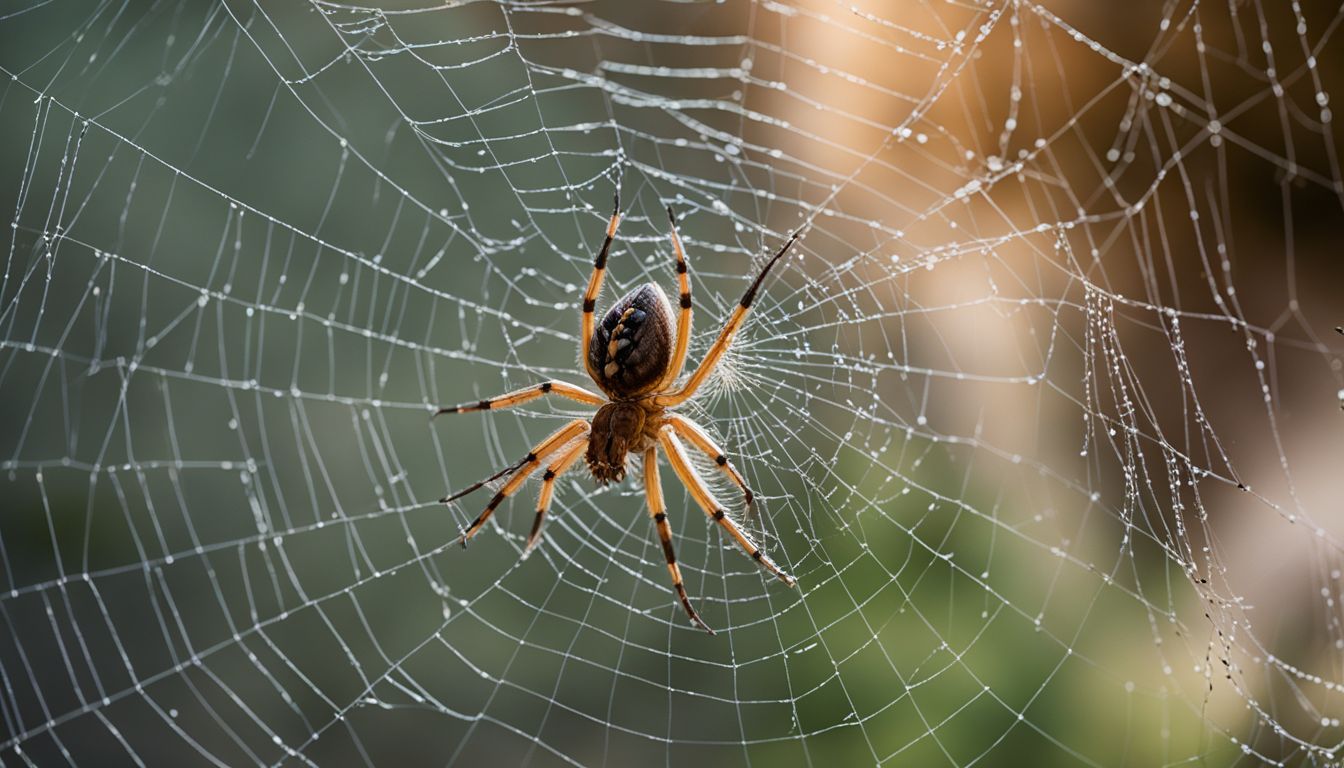
have a unique mouth structure that allows them to capture and consume prey much larger than themselves. Unlike most spiders, they don’t possess strong jaws or mandibles with teeth. Instead, their chelicerae (fang-like jaws) and pedipalps are covered in tiny bristles, which help to make their prey into liquid form for easy consumption.
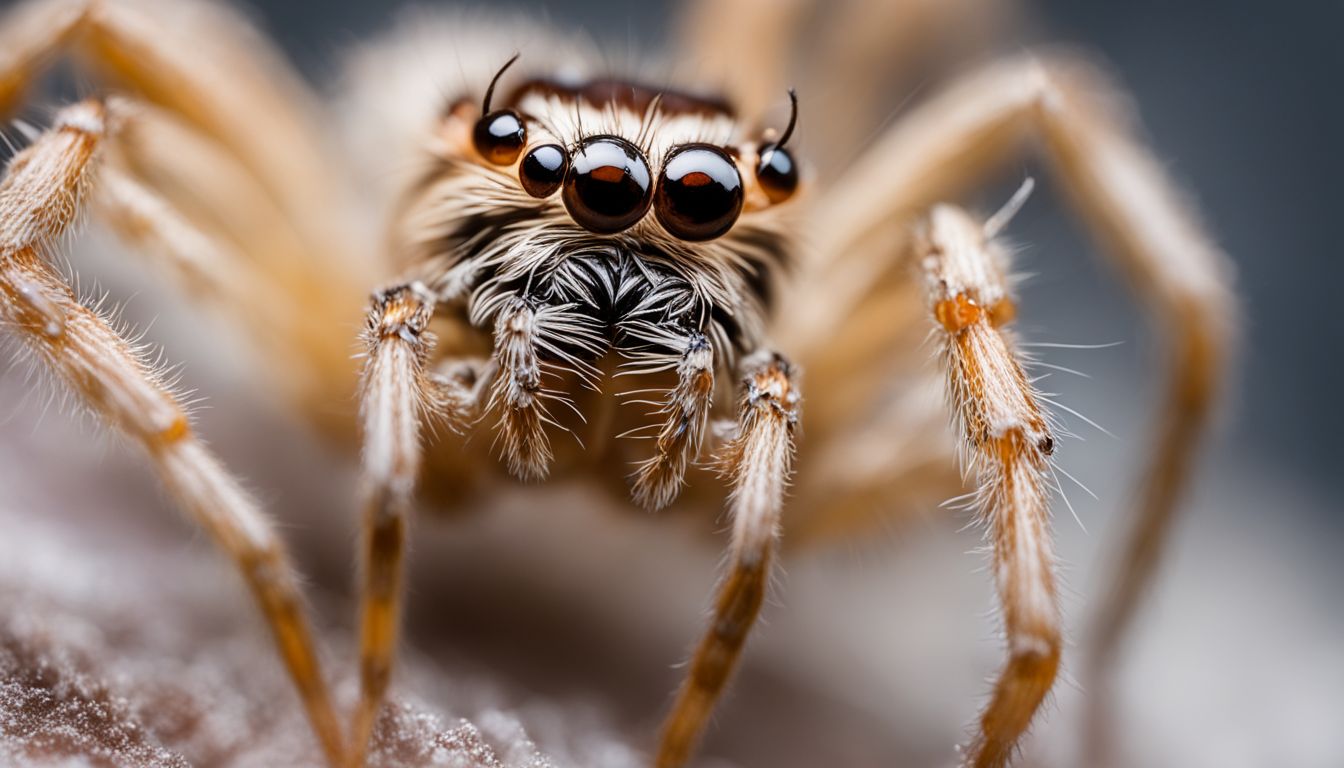
Conclusion
Spiders have completely unique mouth structures, which in some ways are similar to a tongue. While they may not have traditional tongues that we recognize, spiders use specialized appendages called pedipalps and chelicerae to taste their food before consumption.
Unlike mammals, these complex mouthparts allow spiders to consume their food mostly in liquid form requiring the absence of strong jaws or teeth. In addition, there are different kinds of feeding mechanisms used by spiders that help them survive in various ecosystems across the world.
All things considered, it is truly fascinating how intricate spider anatomy can be and serve as an example for studying important features of the survival and evolution of any species!
FAQs
Do spiders have tongues?
No, spiders typically do not have tongues like other animals. However, some species of spiders use a modified appendage that serves the same purpose as a tongue.
What is the structure inside of a spider’s mouth?
The structure within most spiders’ mouths is called the labium sheath which is an area filled with muscles and bristles used for tasting and moving food to their stomachs.
Can a spider taste its food using its mouthparts?
Yes, a spider can taste its food by using sensory organs located on its mouthparts called chemoreceptors. These are sensitive to scent and aid in determining what type of food it should consume.
Are there any similarities between a spider’s tongue-like structures and human tongues?
No, there are no similarities between them as humans have true tongues while other creatures such as spiders use modified appendages or organ systems to serve similar functions as our tongues do.

